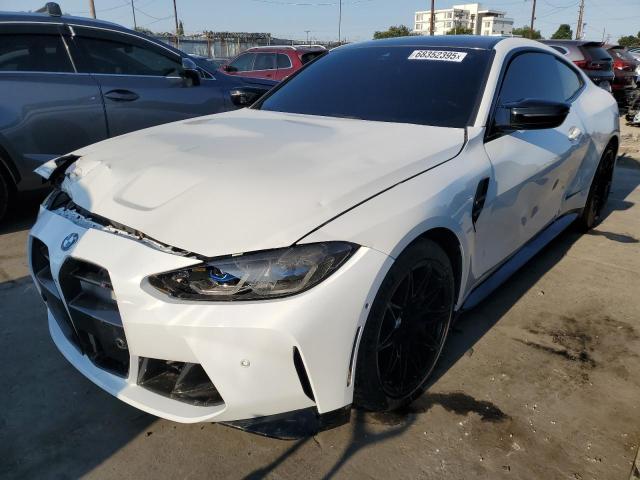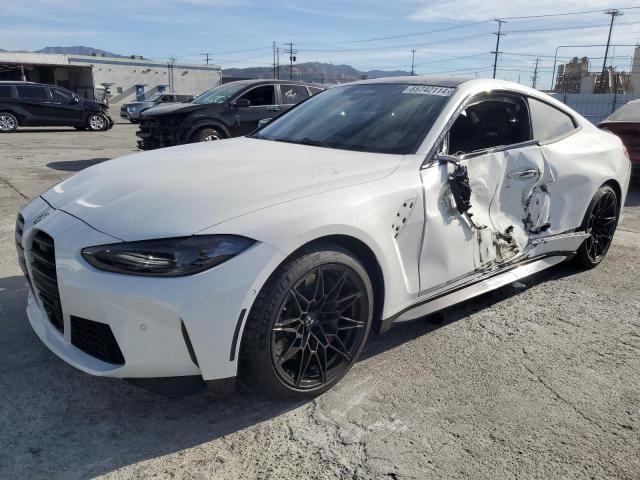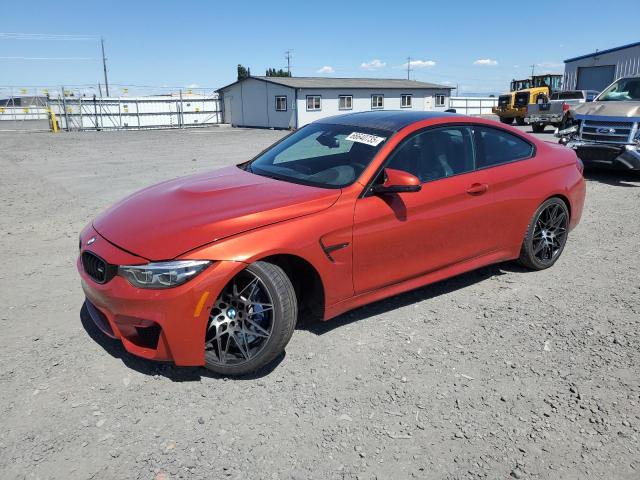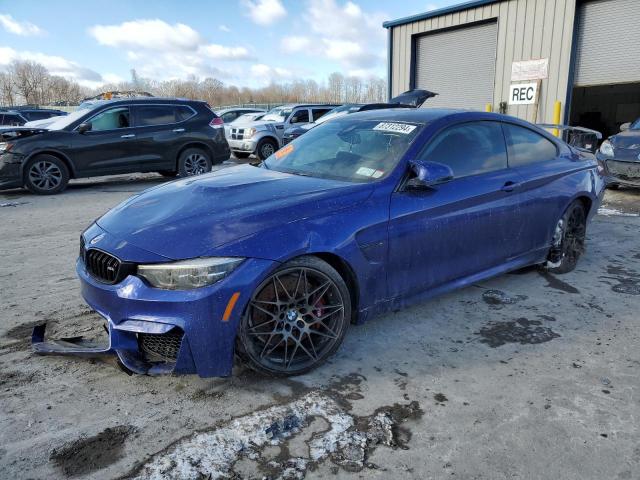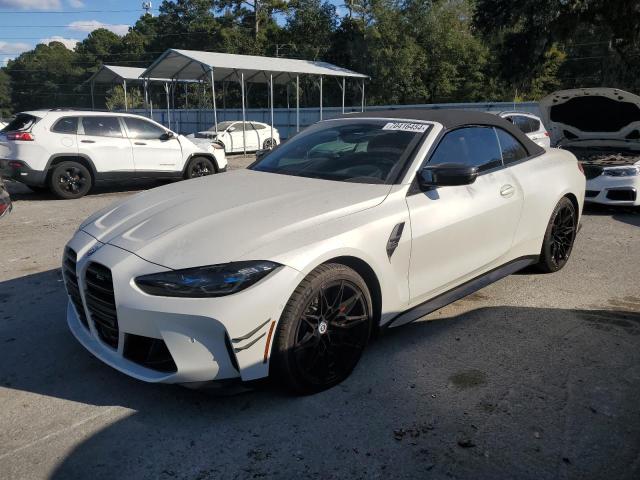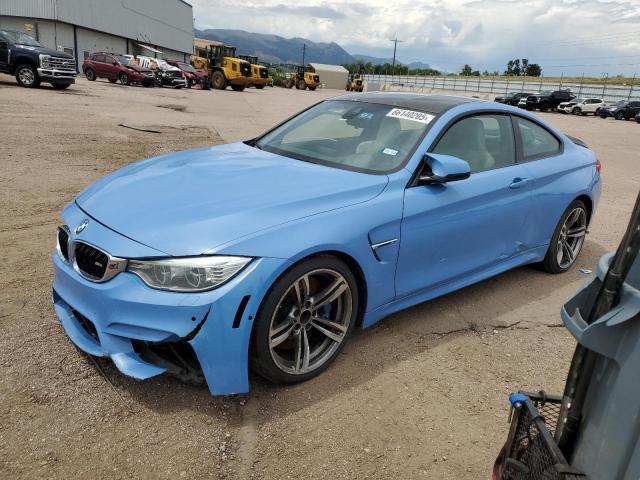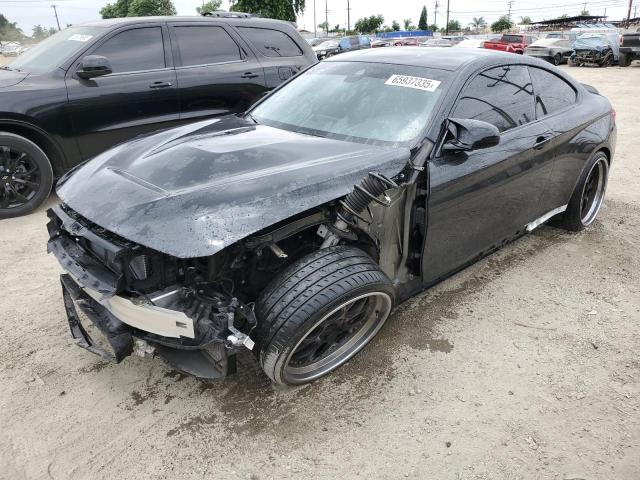2018 BMW M4 | WBS4Y9C50JAC86008
Lot details
- Sale Date2025-05-19
- Lot Number41949997
- ACV40263 $
- Sale documentSalvage (Oregon)
- LocationEugene (OR)
- Odometer61,549 miles (99,053 km)
- Primary DamageFRONT & REAR
- Secondary DamageREAR
- SellerProgressive Casualty Insurance
Vehicle specifications
1
~$135,000
Engine: 3.0L Twin-Turbo I6
Torque: 600 Nm
0–100 km/h: ~3.8 s
The BMW M4 was designed from the ground up as a high-performance sports car, evolving from the M3 Coupe legacy. Its wide track, aggressive stance, carbon fiber-reinforced components, and track-ready setup make it an undisputed member of the sports car segment. The chassis was engineered for lateral agility and precision, complemented by adaptive M suspension and electronically controlled limited-slip differential.
Beyond pure performance, the M4 embraced motorsport heritage with versions like the GTS featuring water injection, roll cage, and carbon-ceramic brakes, directly derived from BMW’s racing programs. Even the standard M4 delivered an intense driving experience and visual presence far beyond a regular 4 Series coupe.
In this generation, the M4 clearly exceeds the threshold for any sport-focused classification – not just through acceleration or horsepower, but through engineering intent, competition pedigree, and its position as a halo model within the BMW lineup.
Final Bid BMW M4 (2018)
$13,100
$19,915
$32,750
Body Styles
The BMW M4 of this generation was offered as a two-door coupe (F82) and a two-door convertible with folding hardtop (F83). Both versions featured aggressively flared wheel arches, a power-dome hood, sculpted M bumpers, quad exhausts, and aerodynamic diffusers. The F83 retained a three-piece folding hardtop, sacrificing some structural rigidity and weight (≈250 kg more than the coupe) in favor of top-down grand touring capability.
The M4 also marked a naming shift: BMW split the 3 Series Coupe into the 4 Series, and accordingly, the high-performance variant became “M4” (instead of M3 Coupe as before). Despite the name change, the M4 retained all hallmarks of its predecessors — including perfect 50:50 weight distribution, rear-wheel drive, and an aggressively tuned chassis designed for high-speed cornering and track days.
Model Name Meaning (Manufacturer)
The “M4” name reflects BMW’s revised nomenclature: even numbers for coupe-style models (4 Series), odd numbers for sedans (3 Series). The “M” prefix continues BMW M GmbH’s motorsport lineage, signifying factory-engineered high-performance vehicles with bespoke powertrains, suspensions, and styling. This generation introduced the S55 engine — the first turbocharged M3/M4 powerplant — designed exclusively by BMW M, rather than modified from a standard production unit.
Model Name Meaning (Languages)
“M” stands for Motorsport, used globally to indicate BMW’s highest-performance models. The number “4” situates the car in the 4 Series family, derived from the German vier — representing the compact coupe class. Together, “M4” is a universally understood designation for a mid-size, performance-oriented two-door coupe/convertible with track-ready engineering and global recognition.
Body & Interior Colors and Rims
The BMW M4 (F82/F83) was offered in a bold and expressive selection of exterior paint finishes, many of which became visual hallmarks of the model. Early cars were introduced in striking shades such as Yas Marina Blue, Austin Yellow, and Sakhir Orange, each chosen to reflect the dynamic character of the M division. More refined tones like Mineral Grey, Black Sapphire, Alpine White, and Silverstone added versatility for buyers seeking a more understated look. Over time, BMW Individual expanded the palette with deeper, more luxurious hues including Tanzanite Blue, Imola Red, San Marino Blue, and British Racing Green. Matte Frozen finishes — like Frozen White and Frozen Dark Grey — gave the M4 an exotic, high-performance identity, while special editions such as the M4 CS were offered in unique colors like Lime Rock Grey or a gloss San Marino Blue with black contrast accents.
Inside, the cabin of the M4 combined driver-centric ergonomics with a range of premium materials tailored for both performance and luxury. Standard upholstery included extended Merino leather in Black or Silverstone, with optional full leather in two-tone combinations such as Sakhir Orange and Black or Sonoma Beige with contrasting stitching. The M4 CS elevated the interior with Alcantara-trimmed surfaces, carbon fiber center consoles, red accent stitching, and loop-pull door panels inspired by motorsport minimalism. Dashboards could be trimmed in aluminum hexagon, carbon fiber, or black high-gloss finishes, while subtle M emblems and ambient lighting added to the performance aesthetic. Convertible models received additional insulation and optional neck-level heating to preserve comfort with the roof down.
Wheels on the M4 were forged alloys, both lightweight and aggressive in stance. Base models came with 18-inch M double-spoke designs in Ferric Grey, while Competition models received signature 20-inch Style 666M wheels with a starburst Y-spoke pattern in either Orbit Grey or gloss black. The M4 CS featured exclusive 19-inch front and 20-inch rear staggered forged wheels in a dual-spoke satin finish, often wrapped in Michelin Pilot Sport Cup 2 tires for enhanced track capability. Behind the wheels, standard blue brake calipers or optional gold-painted carbon-ceramic units added both visual drama and exceptional stopping performance. All setups filled the M4’s flared arches perfectly, emphasizing its wide, purposeful stance and track-ready geometry.
Top Expensive Options
- Adaptive M Suspension: $1,000 (standard on Competition)
- M Carbon Ceramic Brakes: $8,150
- M-DCT Dual Clutch Transmission: $2,900
- Full Merino Leather Interior: $1,500
- BMW Individual Paint (Frozen / special tones): $4,500+
- Harman Kardon Logic 7 Surround Sound: $875
- M Performance Exhaust with Titanium Tips: $2,500
- Carbon Roof (standard on coupe): included
- M Driver’s Package (higher speed limiter + training): $2,500
- Lightweight Alcantara-CS Interior Package: standard on CS
vs Competitors
The F82 M4 faced off against the Mercedes-AMG C63 Coupe, Audi RS5, and Lexus RC F. The C63 (especially with the 4.0L biturbo V8) had more torque and a louder, richer sound, but the M4 was lighter, more precise, and more agile, especially in Competition and CS form. Compared to the Audi RS5, the M4 offered better driver engagement and rear-wheel-drive purity, while the Audi emphasized all-weather grip and refinement.
The RC F was the most comfort-oriented rival, with a naturally aspirated V8 and slower responses. The M4, especially post-2016 with the Competition Package, became sharper and more cohesive — eliminating early criticisms of numb steering and unfiltered turbo torque. The M4 CS bridged the gap toward true track performance, targeting the Porsche 911 Carrera as a lightweight, dual-purpose coupe.
Fun Fact
The F82 BMW M4 was the first M3/M4 model to be turbocharged, ending the era of naturally aspirated inline-sixes and V8s. Its S55 engine was capable of over 700 hp with minor tuning, and the CS version featured a special water-cooling circuit for the charge-air cooler — allowing repeated track laps without overheating, a system inherited by the M4 GTS.


